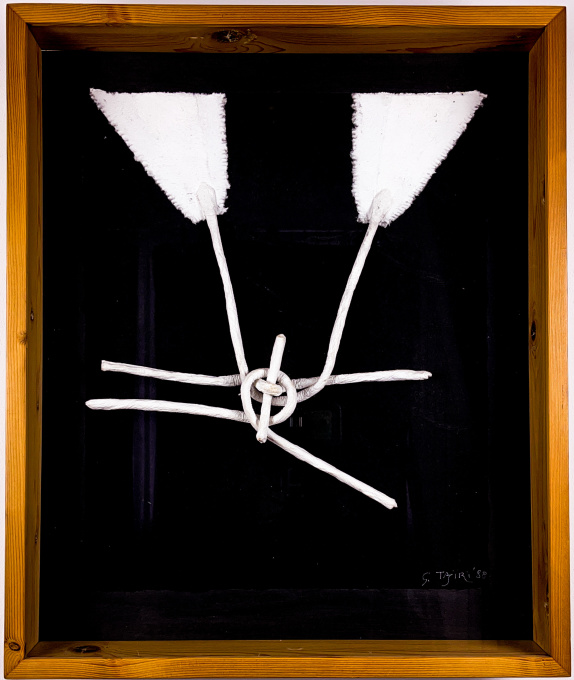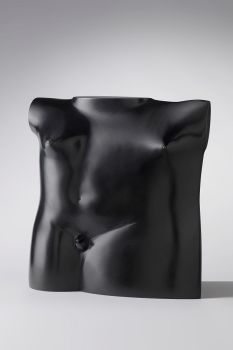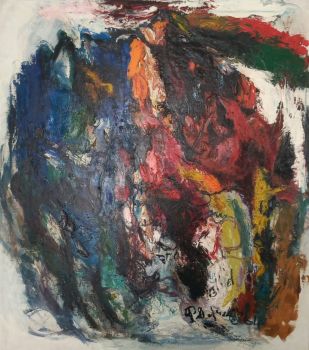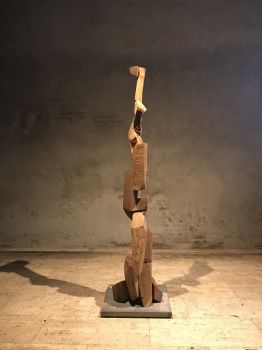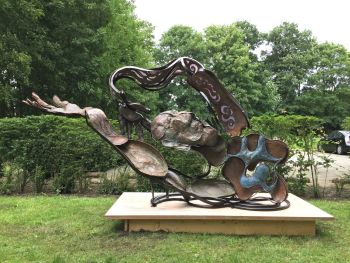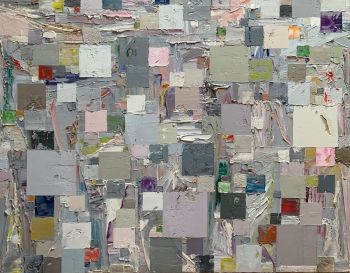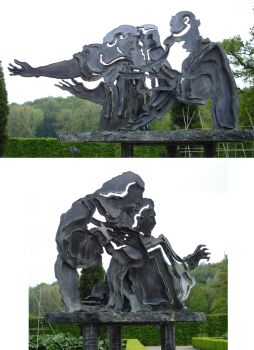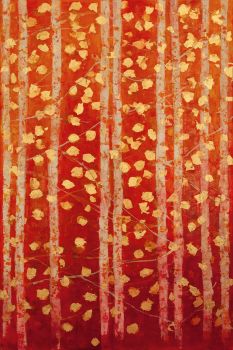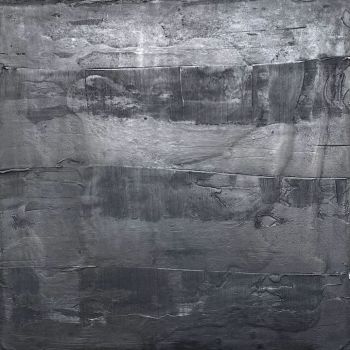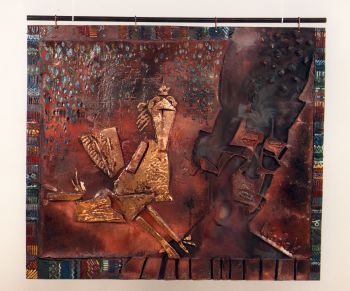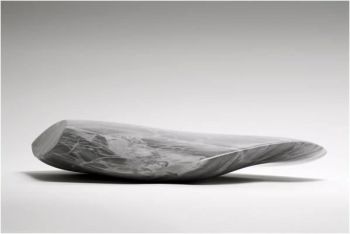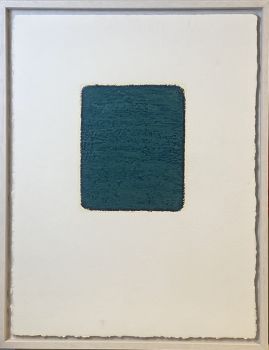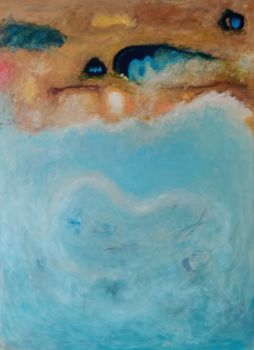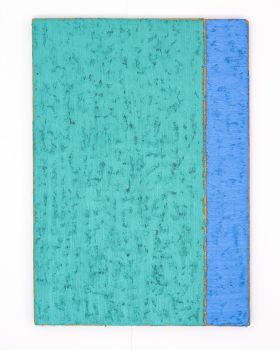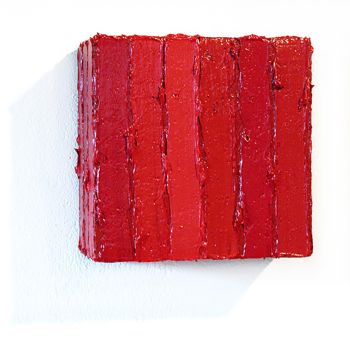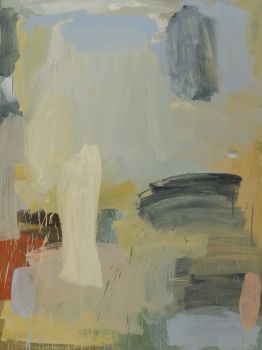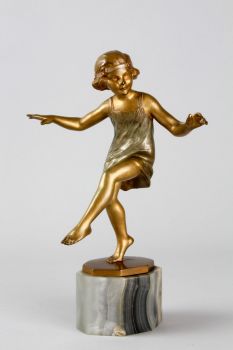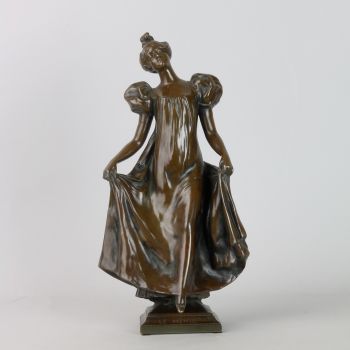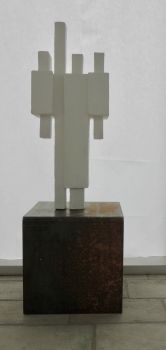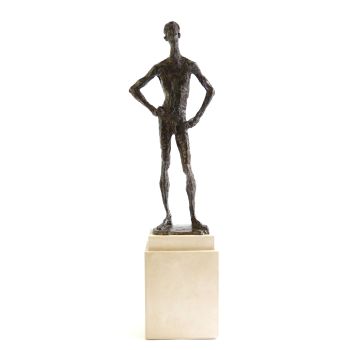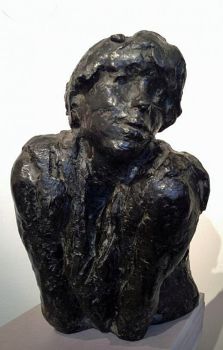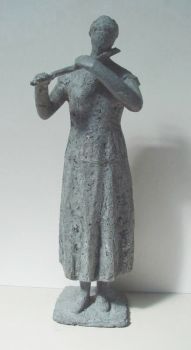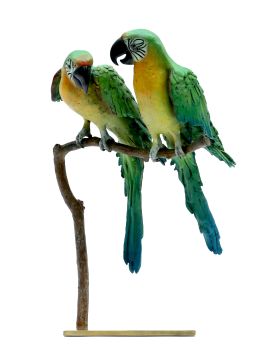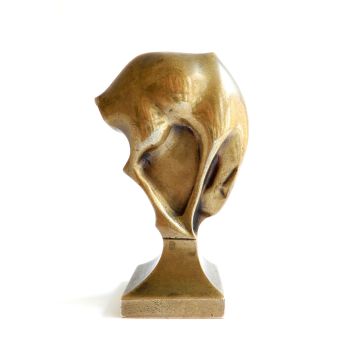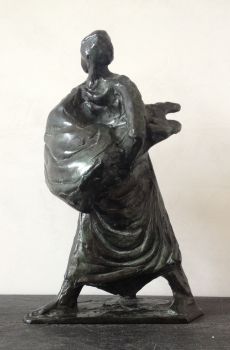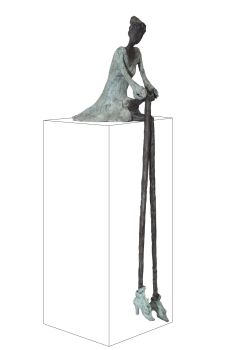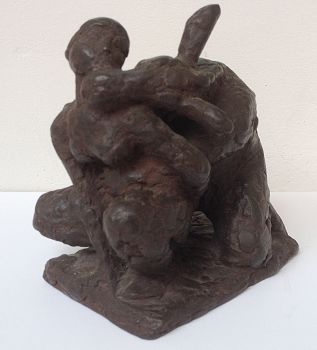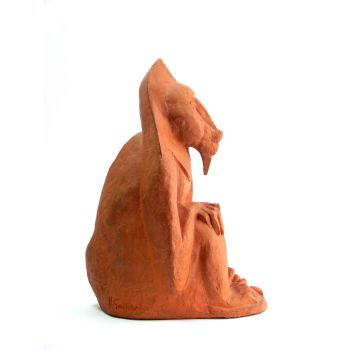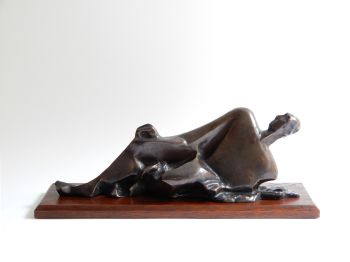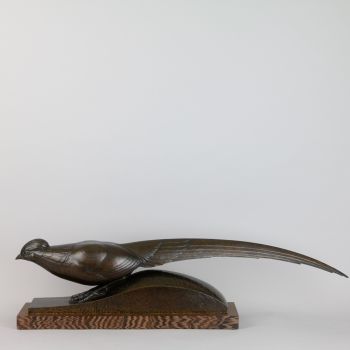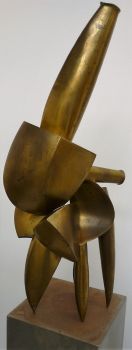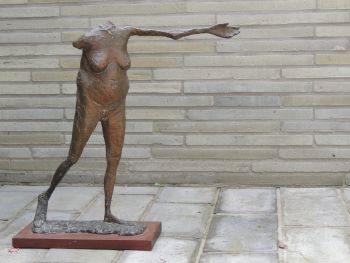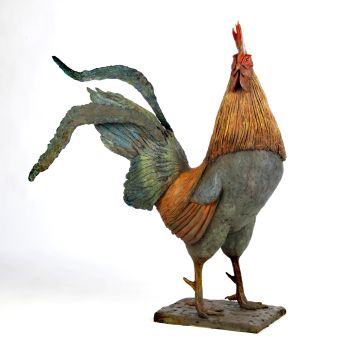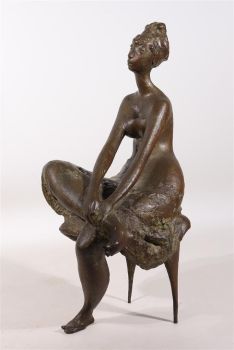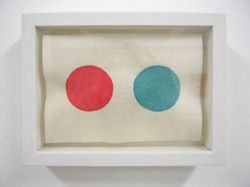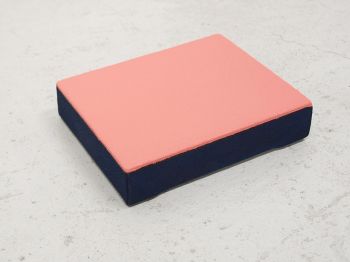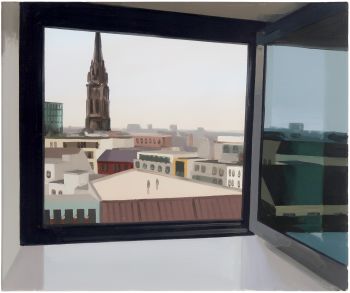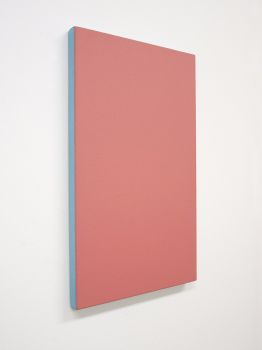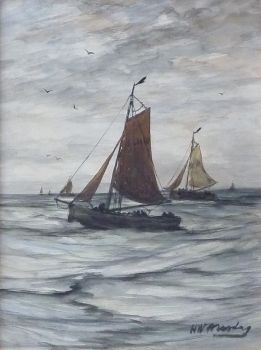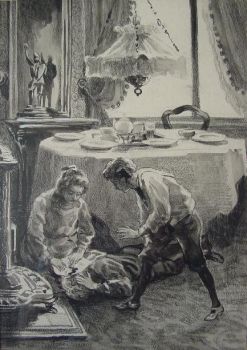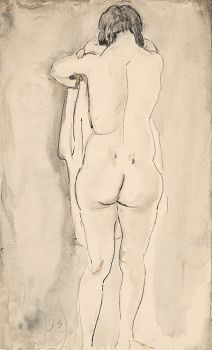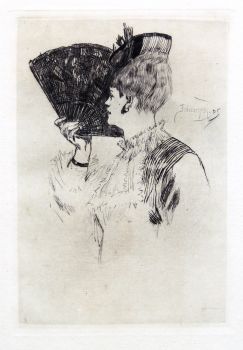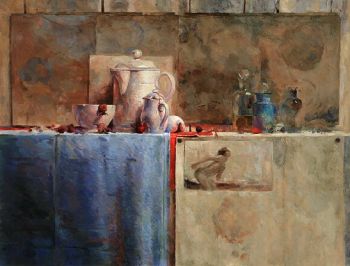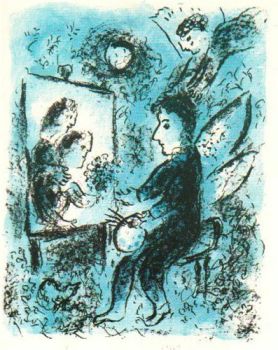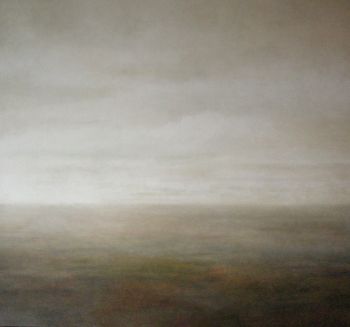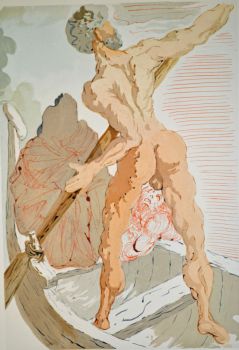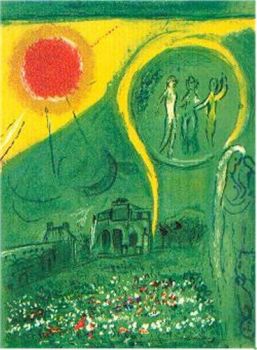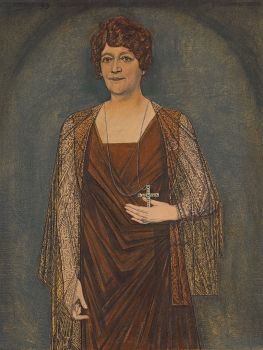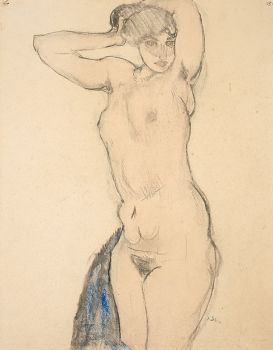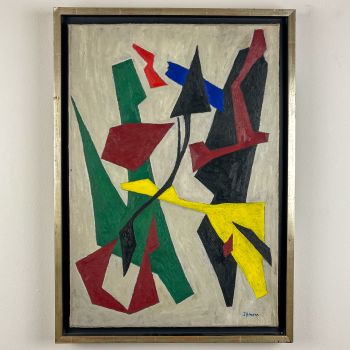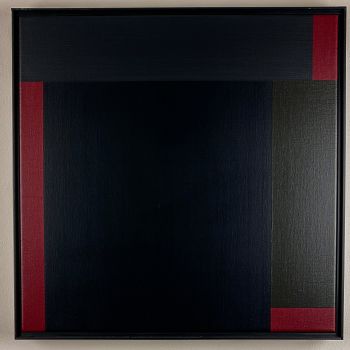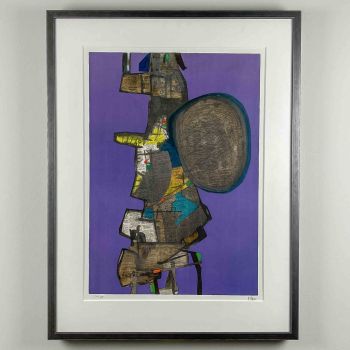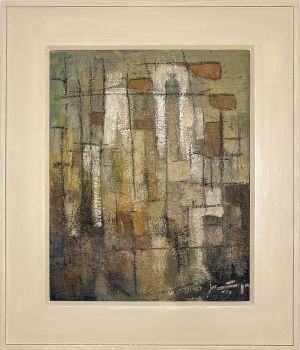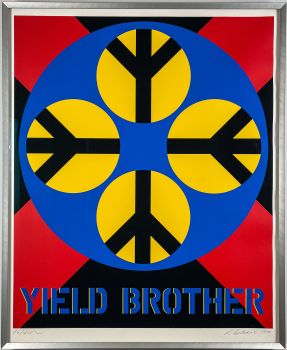“Koan” 1988 – papier-mâché / cotton on paper, original frame 1988
Shinkichi Tajiri
TextilePapierPapier machéCoton
62 ⨯ 52 ⨯ 8 cm
ConditionVery good
Prix sur demande
Van Kerkhoff Art
- Sur l'oeuvre d'artA unique sculpture in papier-mâché / cotton laid down on paper. In original frame. Titled, signed and dated by the artist in pencil. Labeled on the back with second signature by the artist.
About Shinkichi Tajiri
Shinkichi Tajiri (Los Angeles 1923 – Baarlo 2009) was a Dutch – American artist of Japanese descent, most known for his sculpturing work.
He received his education at the Art Institute of Chicago leaving for Paris in 1948 where he studied with Ossip Zadkine, Fernand Lèger, Académie Colarossi and the Académie de la Grande Chaumière. In Paris he came into contact with several artists of the CoBrA movement and in 1949 het participated in two exhibitions of Experimental Art (CoBrA) in the Stedelijk Museum in Amsterdam in 1949 and Museé des Beaux Arts, Liège in 1951. In 1956 he moved to Amsterdam together with his wife Ferdi Jansen – also an sculptor – whom he met while studying with Zadkine.
In the late 1950’s he exhibited with several influential Dutch artist like Wessel Couzijn and Carel Visser. In the 1960’s he was invited to represent The Netherlands at the Documenta II (1959), Documenta III (1964), Documenta IV (1968) and the 31st Venice Biennale (1962). In 1969 Tajiri was appointed professor at the Hochschule der Künste in Berlin on request by its art students, where he taught until 1989. From 1962 until his passing away in 2009 Shinkichi Tajiri lived and worked at the Castle Scheres in Baarlo in the Southern part of The Netherlands.
Tajiri was a recipient of many awards and honorary titles, most notable Officer in the Order of Oranje-Nassau, Member of the Royal Academy of Belgium and Knight in the Order of the Dutch Lion. many of his sculptures are part of museal collections ie: Rijksmuseum Amsterdam, Stedelijk Museum Amsterdam, Cobra Museum Amstelveen, Bonnefantenmuseum Maastricht and Museum Het valkhof, Nijmegen.
Signed
Signed by the artist in pencil
Signed on label by the artist (verso)
Condition
Very good original condition, original frame.
Provenance
Private collection, The Netherlands
Bought directly from the artist
Dimensions
Artwork
Height 50 cm
Width 40 cm
Frame
Height 62 cm
Width 52 cm
Depth 8 cm - Sur l'artiste
Shinkichi Tajiri, un enfant d'immigrants de première génération aux États-Unis en provenance du Japon, a passé son enfance à Los Angeles et à San Diego. À la suite de l’attaque de 1941 contre l’aérodrome américain à Hawaï par l’armée japonaise, la famille de Tajiri a été envoyée au Poston War Relocation Center, un camp d’internement en Arizona.
Dans une combinaison de patriotisme et de son souhait de quitter le camp, Tajiri se porta bientôt volontaire pour l'armée et rejoignit le régiment américain entièrement japonais, qui devint plus tard le régiment le plus décoré de sa taille dans l'histoire militaire américaine. Il a ensuite fréquenté le Chicago Art Institute de 1946 à 1948, travaillant également pour le sculpteur Isamu Noguchi à New York.
En 1949, il s'installe à Paris et étudie avec Ossip Zadkine et Fernand Léger. Principalement sculpteur, Tajiri a également réalisé un certain nombre de films, de vidéos, de photos stéréo et panoramiques et d'œuvres sur papier primés. Shinkichi Tajiri a vu la guerre comme un catalyseur pour son devenir un artiste et il a considéré son imagerie comme un moyen de cristalliser ses expériences de guerre. Les thèmes principaux de son travail sont la vitesse, l'érotisme et la violence dans une confrontation permanente avec les tragédies de la Seconde Guerre mondiale et ses conséquences.
En 1967 et 1968, il réalise une série de sculptures intitulée Machines comme une forme de protestation contre la violence de la guerre du Vietnam. La Machine No 7 1967–8 est une sculpture en acier, en aluminium, en plexiglas et en fer chromé, en forme d’hybride d’avion de chasse et d’arme à feu, incarnant les expériences de Tajiri sur la violence de la guerre.
Êtes-vous intéressé par l'achat de cette oeuvre?
Artwork details
Related artworks
- 1 - 1 / 1
- 1 - 4 / 24
- 1 - 4 / 24
Jan Sluijters
Original illustration of Sluijters for the book: 'Laura's opstel'1881 - 1957
Prix sur demandeKunsthandel Pygmalion
Cornelis Anthonisz Theunissen
TRÈS RARE PREMIÈRE CARTE IMPRIMÉE D'AMSTERDAM, VILLE EN ASCENSION1544
€ 175.000Inter-Antiquariaat Mefferdt & De Jonge
 Sélectionné par
Sélectionné parDanny Bree
1 - 4 / 24- 1 - 4 / 12

